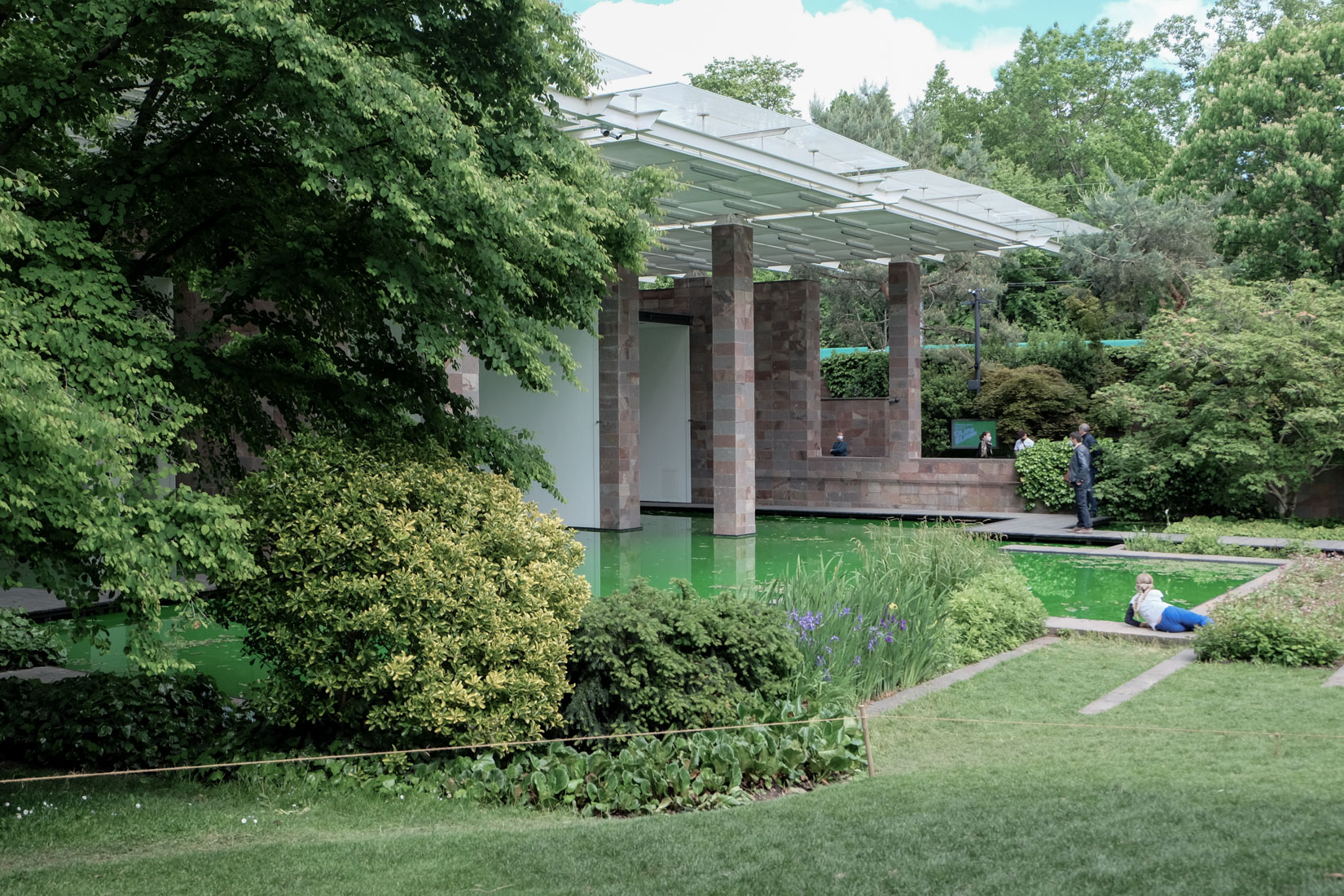 |
 |
 |
 |


Beyeler Foundation Museum
Baselstrasse 101, Riehen
1991 - 1997
The Beyeler Foundation museum came into being when arts patron and collector Ernst Beyeler decided to share his extraordinary art collection with the public. It was built in the park of the 18th-century Villa Berower, which houses the museum’s offices and a restaurant. Beyeler wanted the art to be lit entirely by natural light and the museum to be immersed in the surrounding greenery.
The building sits on a long and narrow plot of land dotted with centuries-old trees, bordered by a road at its eastern edge and to the west by cultivated fields that spread out over the entire valley.
The museum’s building has a rigorous site plan made up of four main walls of equal length that run in a north-south direction along the perimeter wall. The walls – 127m long and 4.8m high – are made of reinforced concrete and covered in a red porphyry stone mined in Patagonia, its grain and hue reminiscent of the stone used for Basel cathedral.
The cross section is more dynamic: the walls have differing heights, with the one furthest east extending into the park to become a low wall resembling the building that leads visitors towards the entrance. The museum exploits the natural slope of the terrain and its glass roof seems to float over the more solid structure of the walls.
The inner spaces of the museum are organised by the four traversing walls and, north and south, the galleries end with floor to ceiling windows that are 6.8m wide and 5m high. These vast windows connect the indoors with the outside and help to establish a dialogue between the works of art on display and the surrounding landscape. Along the western side, the intimate rooms of the museum are flanked by a long narrow winter garden encased in glass: a space for contemplation and rest.
Keeping Ernst Beyeler’s love of natural light in mind, special attention was given to the design of the roof: a veritable “machine for zenithal light.” The glass roof is made up of layers of glass that filter the direct sunlight softly (50%) into the interior and ensure the works of art are not damaged. It is held in place by a steel structure and features an overhanging canopy. Slanted, screen-printed plates of tempered glass placed at an angle over vertical steel box beams are set over insulating laminated safety glass. There is a second layer of glass 1.4m beneath the transparent roof, and it serves as an air chamber to counter the effects of outdoor temperature changes and facilitate maintenance. The adjustable slats that allow just the right amount of direct light to filter in, and the artificial lighting that compensates when it is dark outside, are located in this chamber. Under all of this is a velum: a structure consisting of boxed perforated plates inside which a layer of white fabric is stretched to ensure the uniform dispersion of light.
(Text: Renzo
Piano Building Workshop)